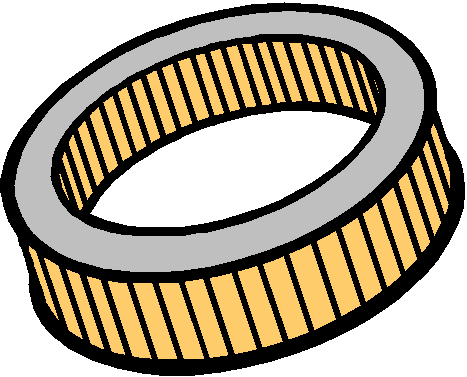 Filtering Tools
Filtering ToolsCreating Email Message Filter Rules
(March, 2009)
By Wayne Maruna
Our Taberna email distribution list, referred to as ‘TabMail’, continues to see its subscriber list grow, as it now stands well in excess of 400. The service exists to enhance communication and cooperation within our little geographic corner of New Bern.
We have our frequent message posters and those who are content just to read and keep up with what’s going on. But even in the closest of families, we find ways to be annoyed by what someone does or says. For example, I recently received an email essentially asking if I had any magic up my sleeve to resolve a small issue. We have subscribers who regularly post invitations to recurring events. The details in this specific case are not relevant, as it could have been one of many such postings, whether considered political, religious, social, philanthropic, or quasi-commercial. Another subscriber had written our poster and asked to be taken off his/her mailing list. That of course would have required being removed from TabMail, which was not the intent of the writer. So I was asked if I had any ideas.
Needless to say, most of us have figured out that the Delete key works wonders for such situations. The incoming email in this case is not technically considered spam, the name given to unsolicited commercial email, since both sender and receiver had volunteered to be added to the TabMail subscriber list. At the same time, we all have some friend or relative who sends us essentially benign email that for whatever reason just rubs us the wrong way, yet we don’t want to make waves and ask that person to take us off their distribution list.
 Filtering Tools
Filtering Tools
The solution is to make use of the filtering tools built into every email application. Whether you use the Outlook Express email app built into every version of Windows prior to Vista, or Windows Mail (the Vista successor to Outlook Express), or the confusingly similar sounding Microsoft Outlook built into Microsoft Office, or a non-Microsoft application like Mozilla’s Thunderbird program or the open source Eudora, you will find, buried somewhere in the Tools section of the program, an email filter option. Typically the way these filters work is you create a new folder in your email program to go along with your Inbox, Outbox, Sent, or Deleted folders. It may be called Junk Email, or Spam, or SkipIt, or whatever you choose. Then you create a ‘message rule’ that considers each email as it is received and routes it into that folder instead of into your inbox. You can then choose to scan those messages later to make sure nothing important got by. You may also choose, after testing the filter to make sure it is working as intended, to route those messages directly into your Deleted folder rather than into some intermediary folder so you don’t have to look at them at all.
As for how you create and use the filters, you will find the options to be many. You can create a rule such that everything from a certain sender’s email address gets quarantined. You can scan for a certain word or phrase in the subject line. The message rule feature typically walks you though the many options available.
I simply don’t have room in this column to walk you through the process for setting up messages rules, even for one email application, let alone five or more. Instead, let me direct you to some tutorials that others have already created and placed on the internet for the benefit of all.
For Outlook Express and the early and newer versions of Outlook, try this link:
http://www.sitedeveloper.ws/tutorials/spam.htm